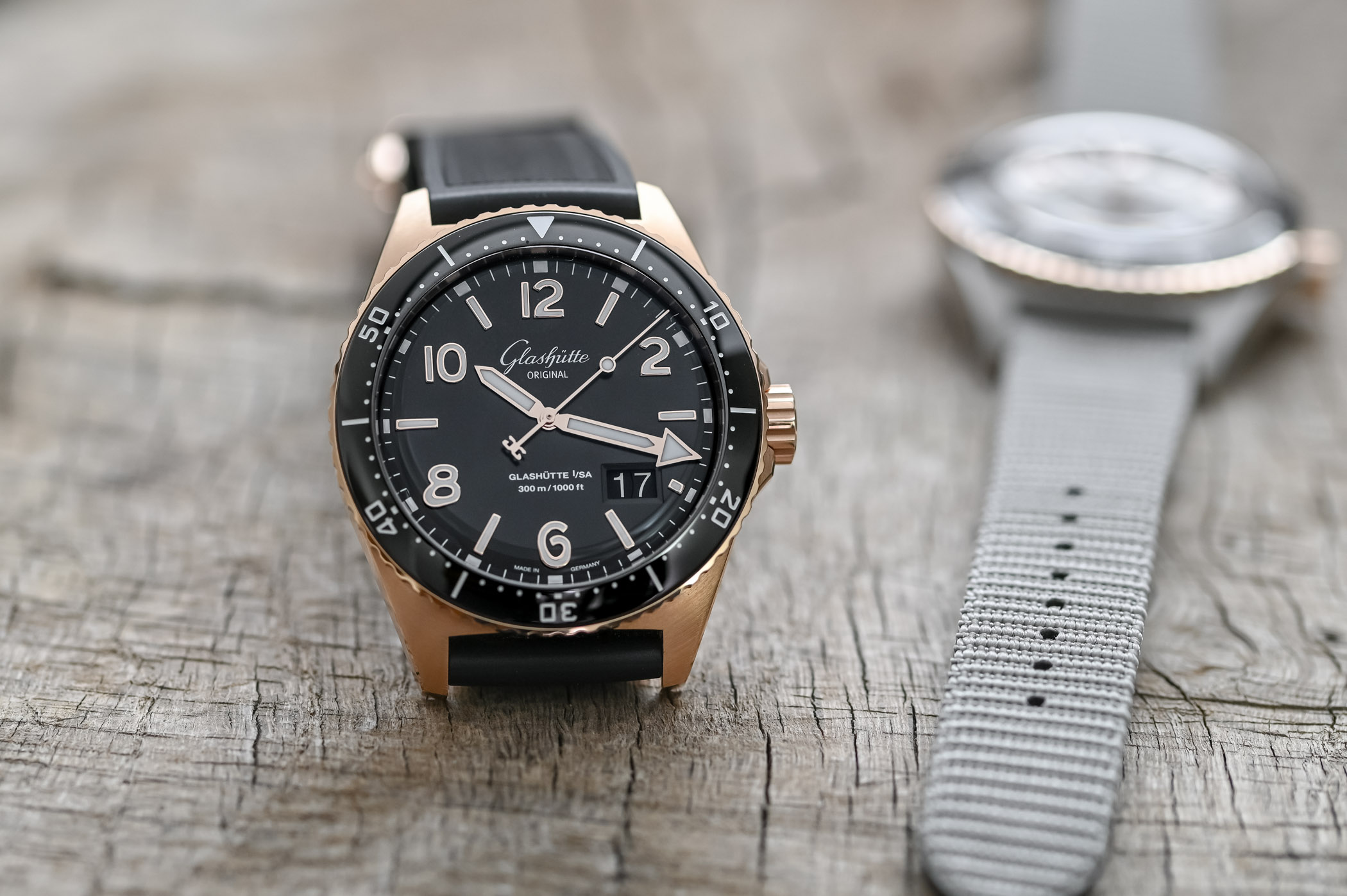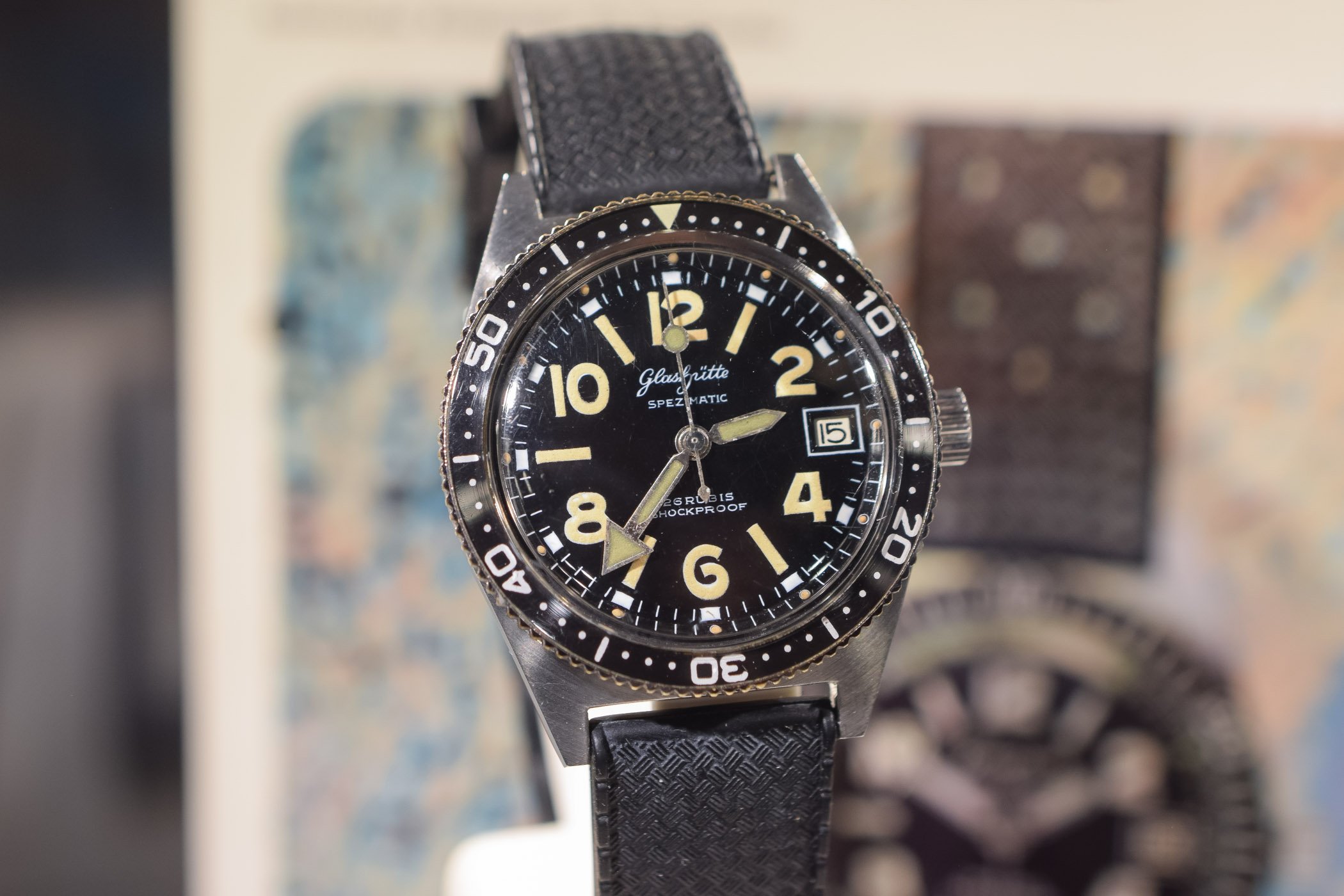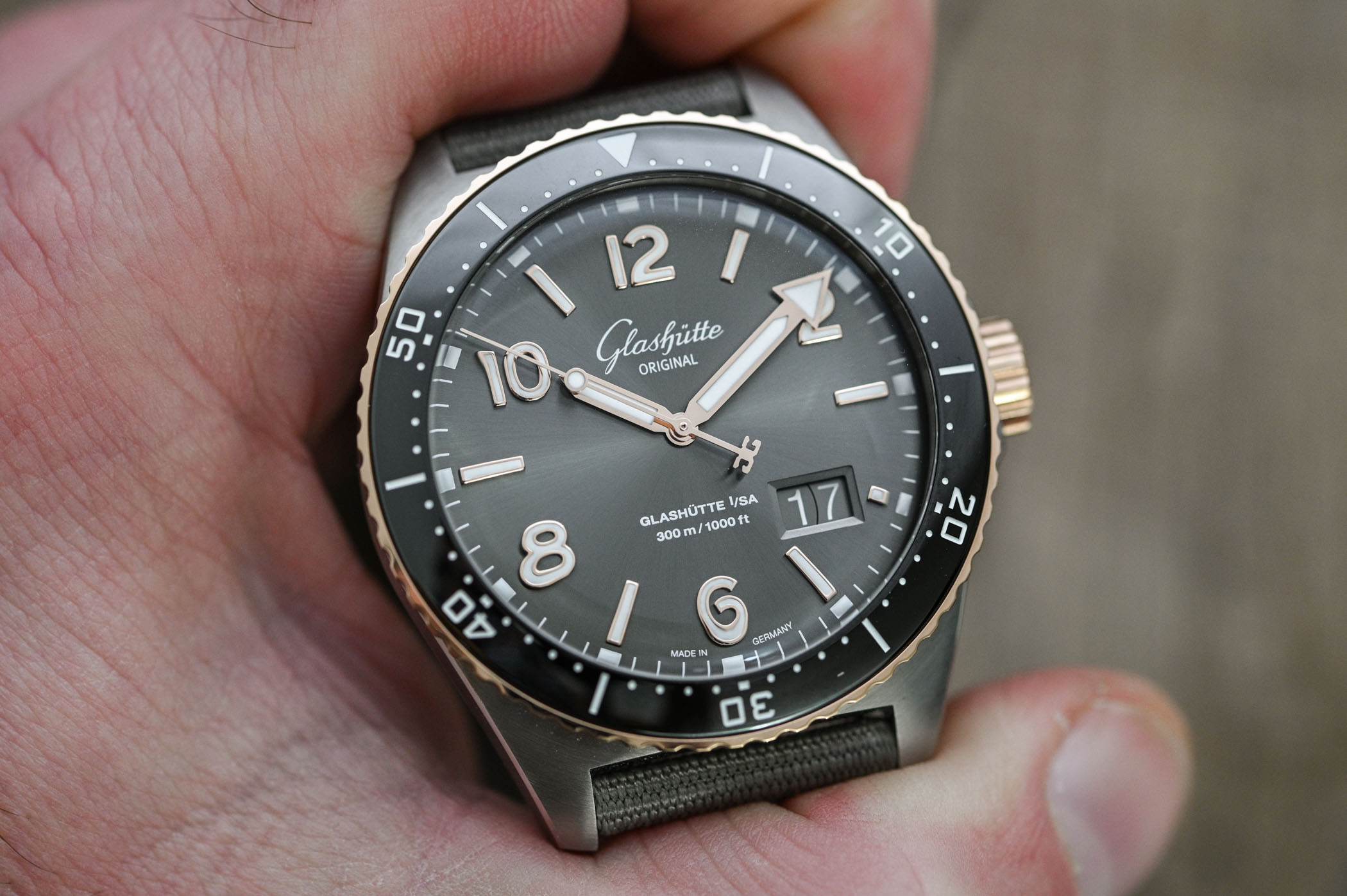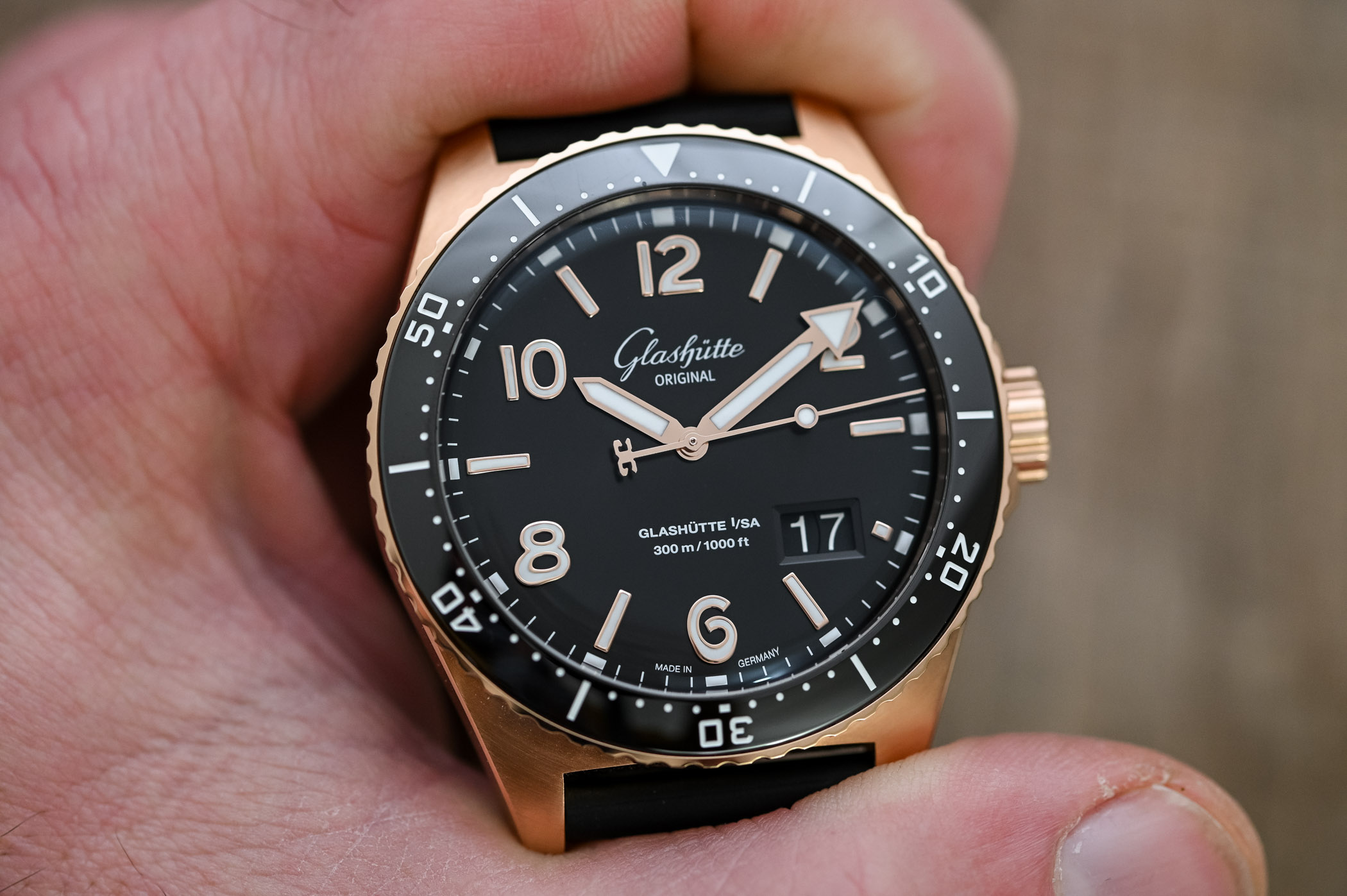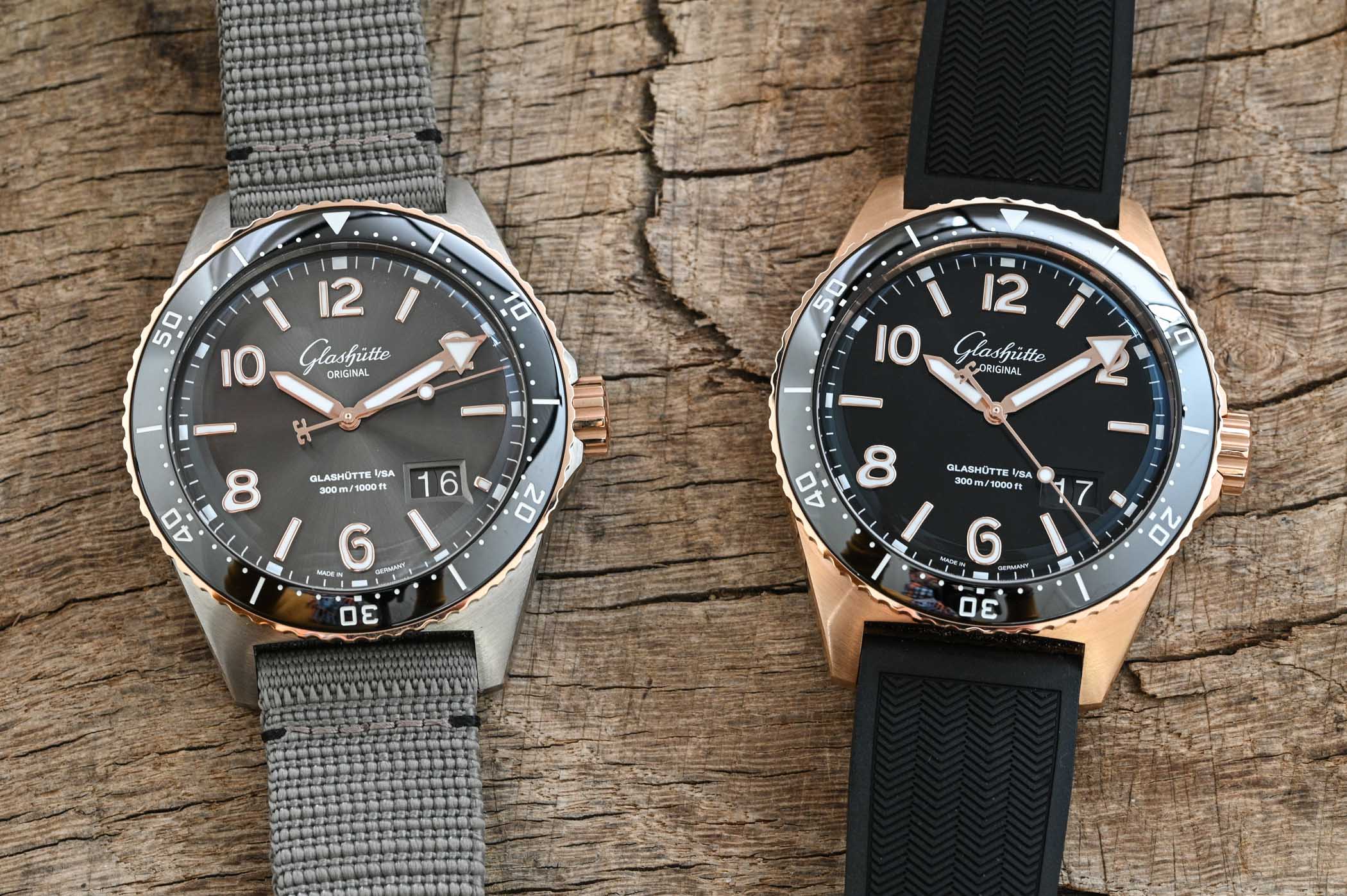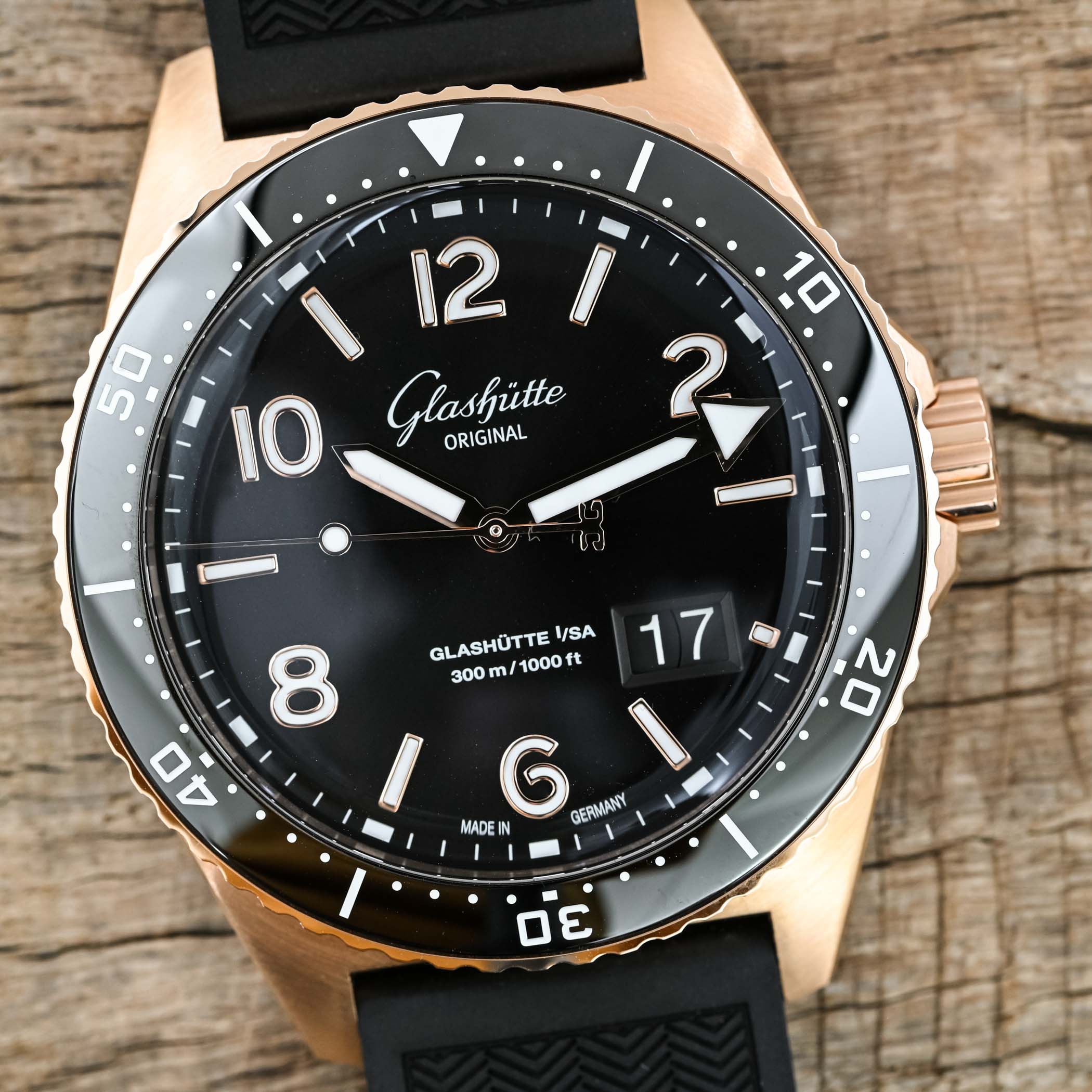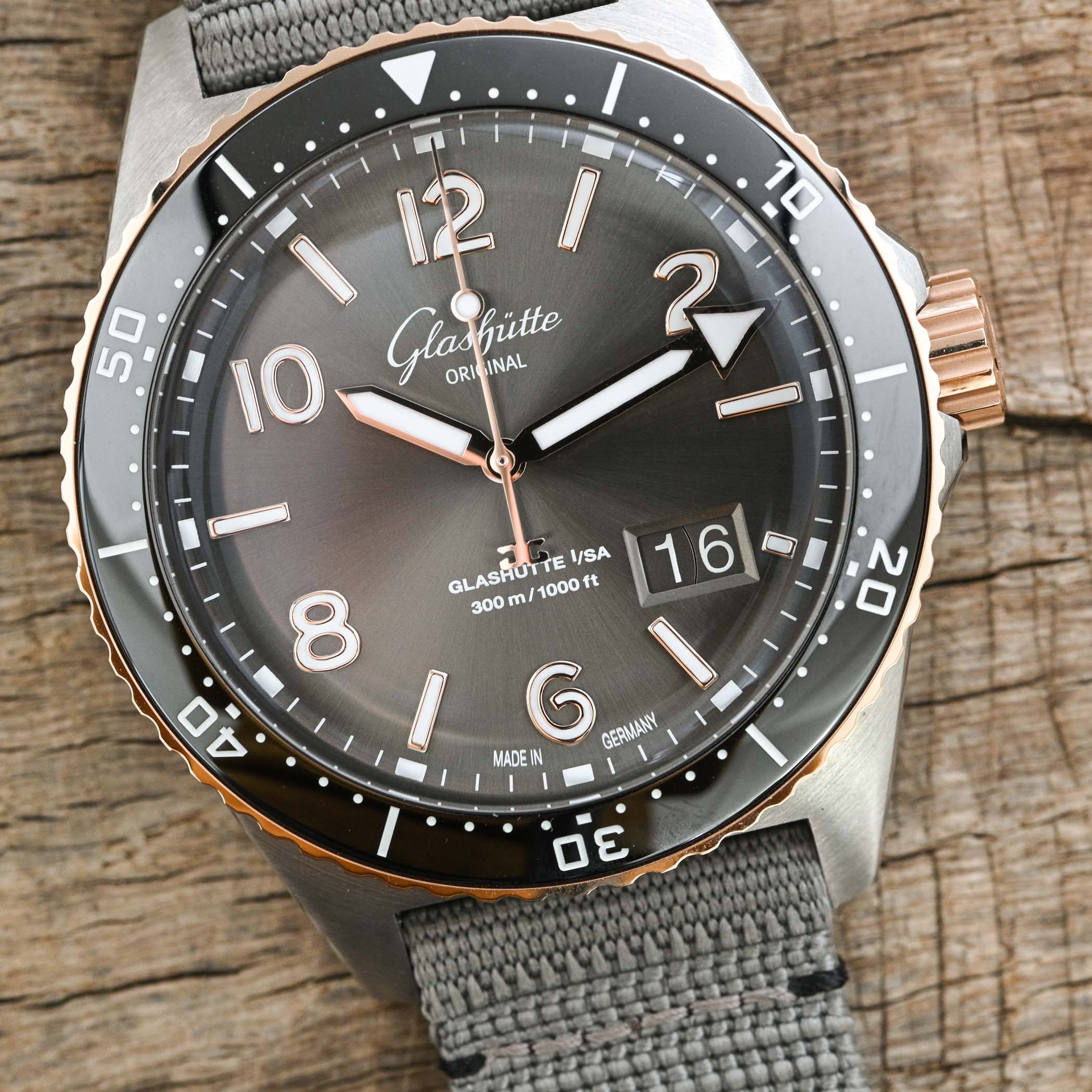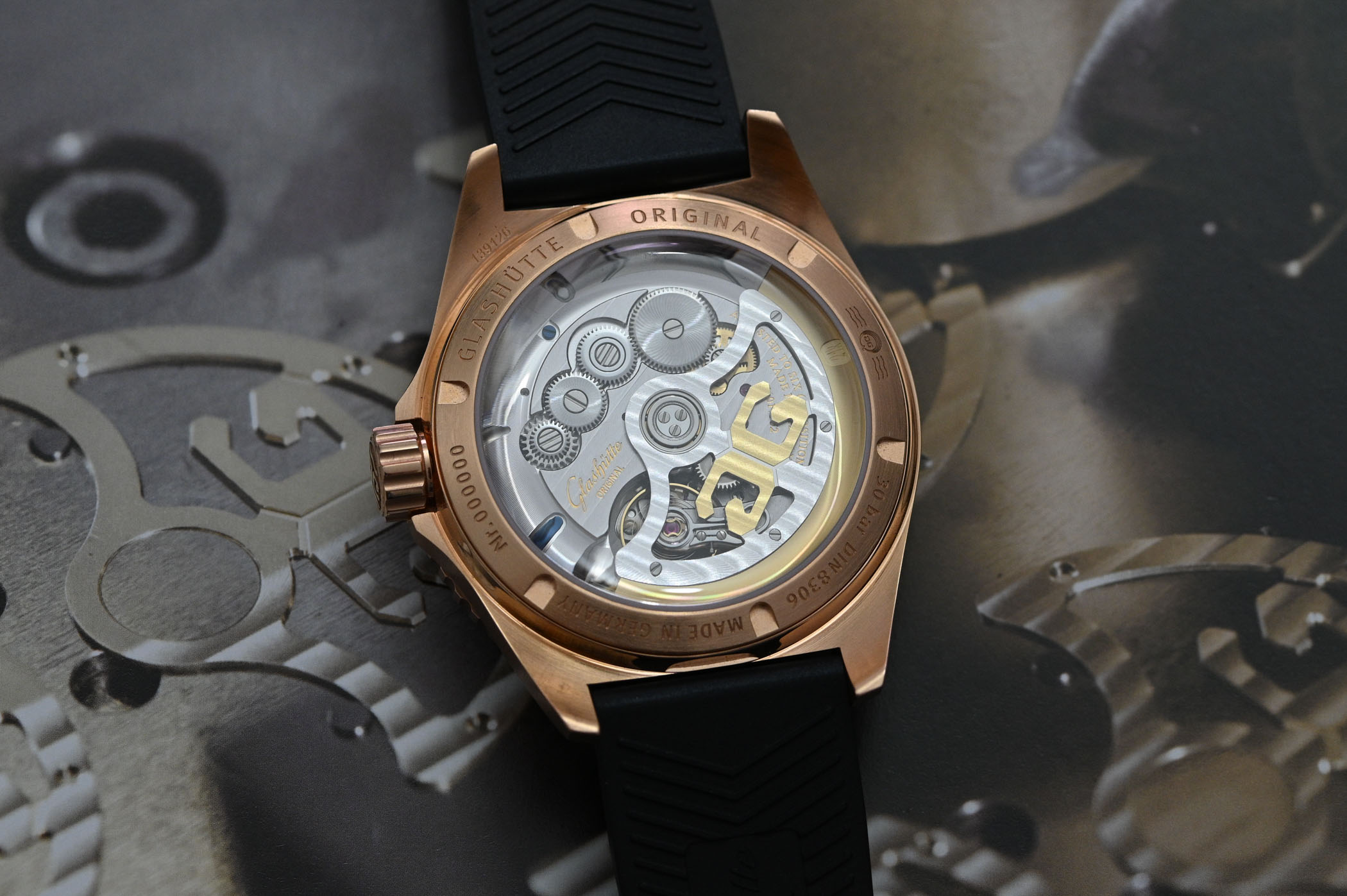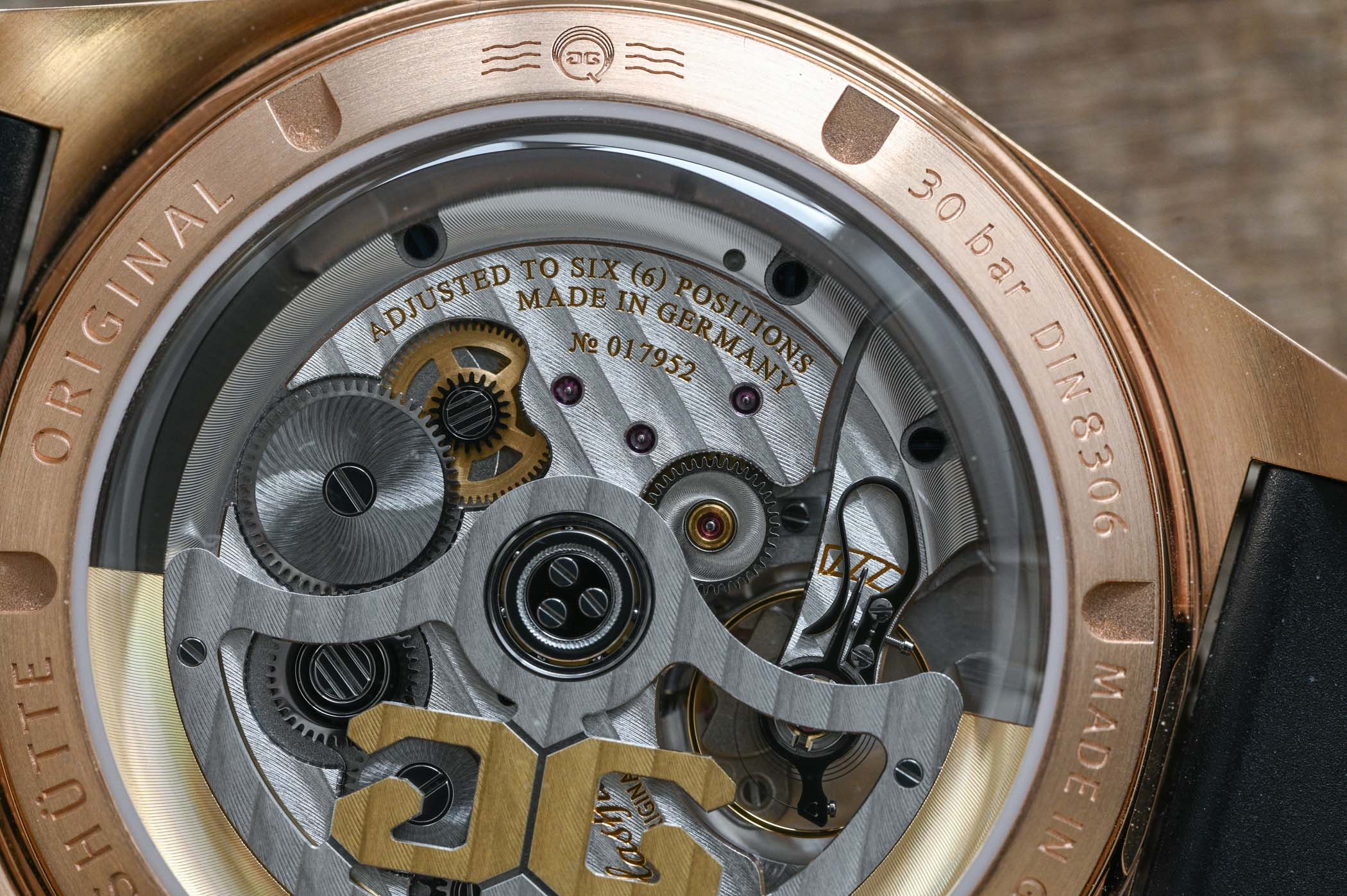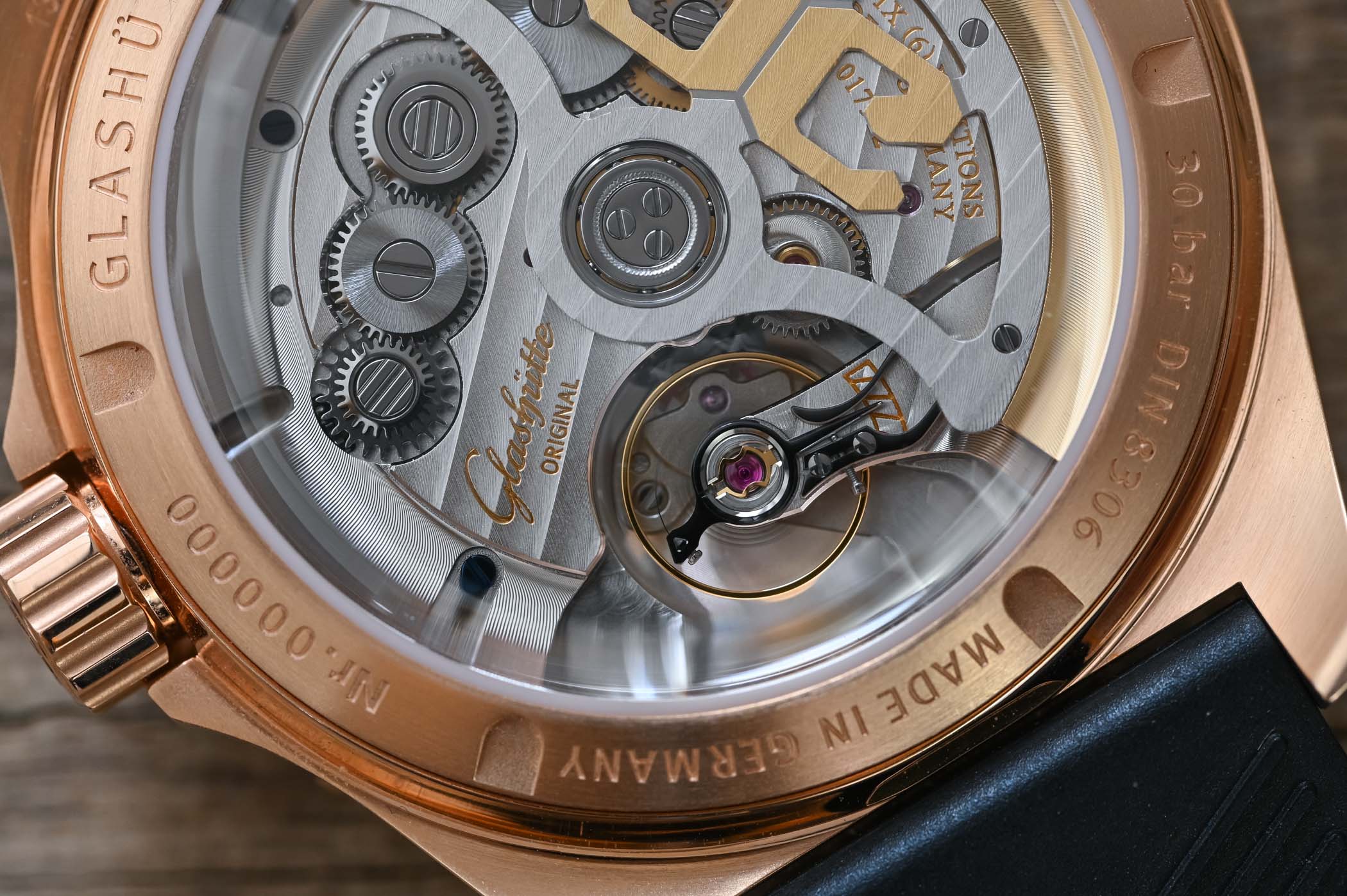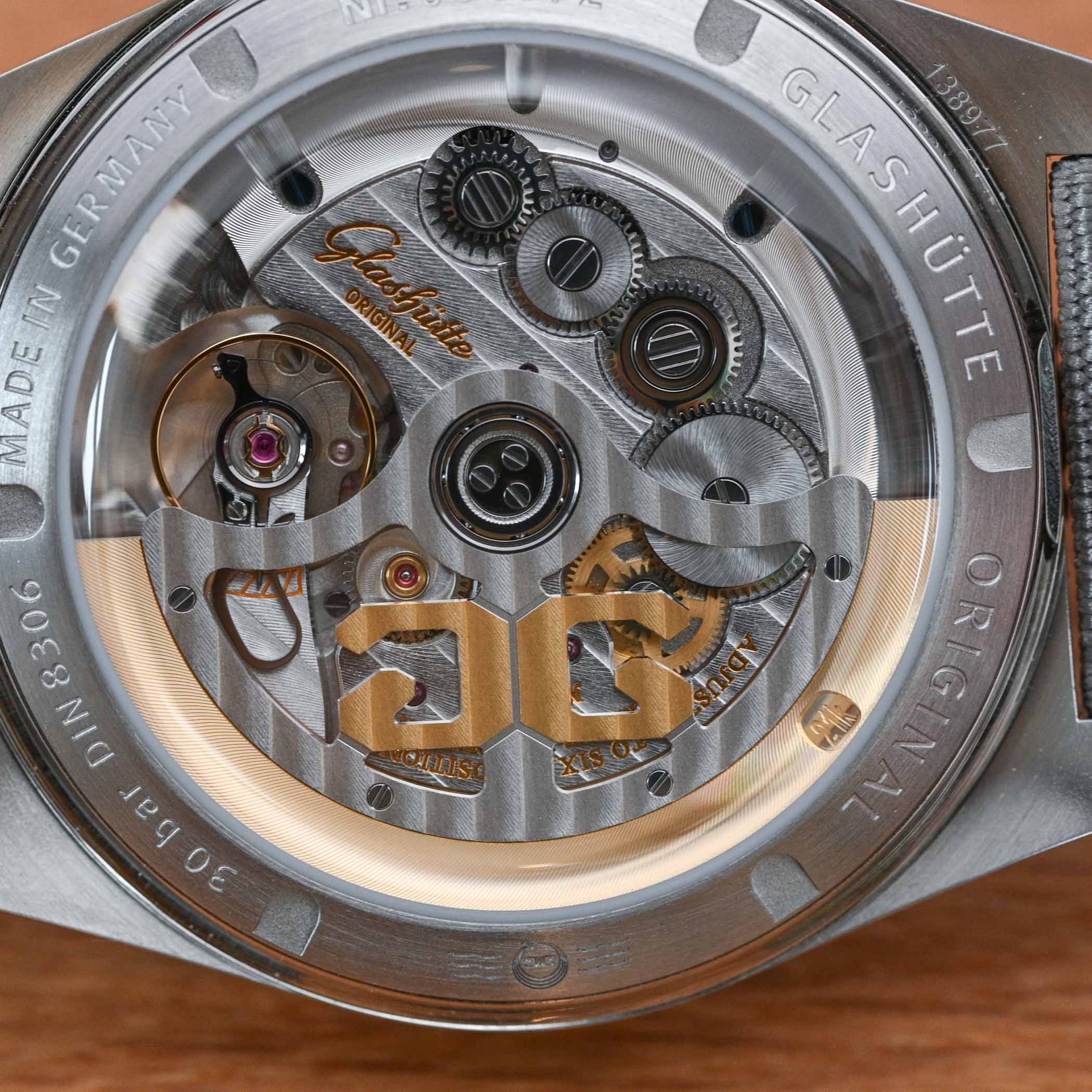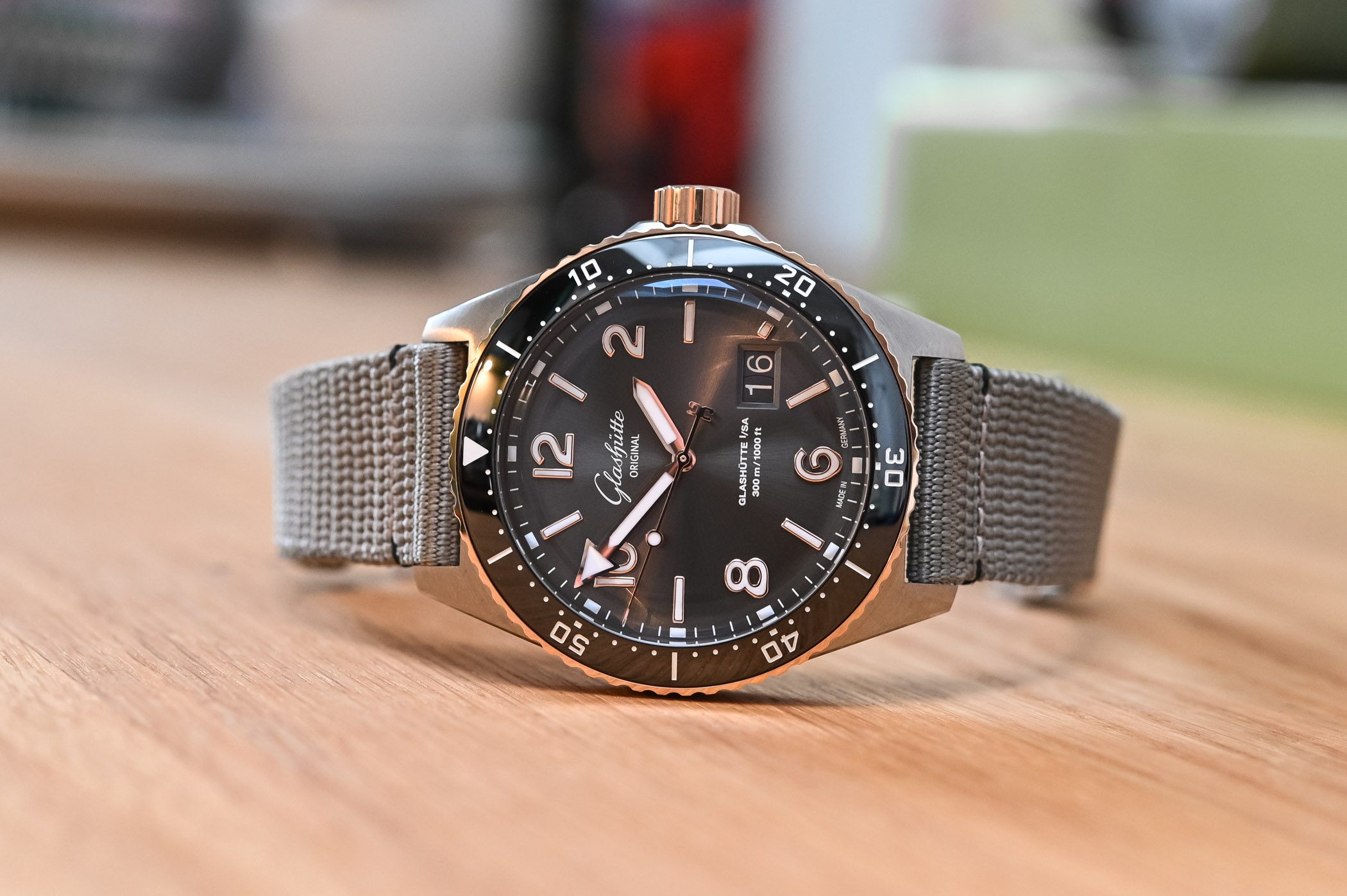Glashütte Original SeaQ Panorama Date Red Gold and Bicolor (With Video)
Solid red gold and two-tone gold and steel models prime the 43.2mm SeaQ for a dive in big league waters.
Glashütte Original surprised aficionados in 2019 with the launch of its Spezialist collection and its vintage-inspired dive watch called the SeaQ. What did Glashütte Original have to do with vintage-inspired divers many asked? Was it a way of covering a gap in the brand’s portfolio to attract a younger, more sports-oriented clientele? The answer was two-fold: yes, the brand wanted something fresh and sporty to complement its offer, but no, it didn’t surface from out of the blue. In fact, the design team at GO found the muse behind this watch in the brand’s own archives, on display in the German Watch Museum just down the road from the manufacture. A 1969 model, known as the Spezimatic Type RP TS 200 and produced by state-run Glashütter Uhrenbetriebe (GUB), was chosen as the guiding light of the SeaQ. Revisited in June 2020 in a 43.2mm two-tone steel and red gold model with a grey dial, and a solid red gold model with a black dial, we’re going to take a double look at these two models in the video review above and in the article below.
Surfacing from the past
Glashütte might be a small village, but it is the biggest name in German watchmaking. Following the arrival of watchmaking in 1845 in the impoverished hamlet of Glashütte, master watchmakers from Dresden and beyond gravitated to Glashütte creating a veritable epicentre of precision watchmaking. In a short span of time, the ‘Made in Glashütte’ denomination of origin became a seal of quality around the world. Precision marine chronometers, regulator or pendulum clocks and pocket watches were standard fare from the big names in town, and so was innovation, with Alfred Helwig who developed the Flying Tourbillon in 1920, as well as the German School of Watchmaking, now the home of the German Watch Museum.
Following the ups and downs of the two World Wars and the division of Germany, what remained of Glashütte’s traditional watchmaking industry was merged into the state-owned Volkseigener Betrieb, VEB, in 1951 to form the Glashütter Uhrenbetriebe (GUB). It was during this particular period that the GUB Spezimatic Type RP TS 200 surfaced in 1969, the forefather of Glashütte Original’s SeaQ.
The Spezimatic Type RP TS 200 of 1969 was a relatively rare (produced in small quantities) dive watch equipped with the calibre 75. Designed for professional and combat divers alike, the 36mm Spezimatic Diver was characterised by its excellent rate precision, reliability and robust construction. Design-wise, the Spezimatic was a compact, utilitarian dive watch. With its black dial, massive (and luminous) numerals, thick hands and markers, the Spezimatic provided GO with the perfect cocktail for an audience of vintage-hungry watch buyers. Combined with its late 1960s allure, which you can see in the Spezimatic’s overtly tool-watch nature and somewhat rudimentary finishes, you can see why GO jumped on it.
SeaQ Specs
Since its launch in 2019, the SeaQ has appeared in 39.5mm and 43.2mm cases. Common traits are the atypical steel cases with sharp angles and circular brushed surfaces, unidirectional bezels with a ceramic inlay, large indices and hands, in-house automatic movements, and a point that should not be overlooked; all variations fulfil the international divers’ watch standard ISO 6425 for professional dive watches, as well as Germany’s national industrial standard for dive watches, DIN 8306. Just to show you how seriously German Glashütte Original is about its testing, it has even installed a water-resistance testing department inside its manufacture. You can read all about the testing procedures here.
Apart from their different case sizes and the more vintage air of the smaller 39.5mm SeaQ, the 43.2mm model has a higher water-resistance of 300 metres, more refined finishings on the dial with applied indexes, the incorporation of the brand’s hallmark Panorama Date, as well as a high-end, chronometer-certified movement visible through the sapphire caseback.
We’ve seen the SeaQ with steel cases and black and blue dials, but in June 2020, for the new collection, the larger 43.2mm SeaQ appeared with an 18k red gold case and black dial and with a two-tone steel and red gold case and grey dial.
SeaQ Panorama Date Bicolor and Red Gold
The 43.2mm model evokes many attributes of the original Spezimatic, including the overall shape of the case and the oversized numerals and hands on the dial. But it is a far more modern and luxurious version than the 39.5mm. The dimensions of the case – 43.2mm x 15.65mm height – are definitely those of a contemporary dive watch. There is no denying that it is a large watch, and much heavier than the regular steel version because of the use of red gold, but it sits comfortably on the wrist thanks to the relatively short lugs.
Both models display brushed and polished finishings with well-defined polished bevels on the scalloped parts of the case middle that protect the crown. As you can see, the solid red gold model has a gold middle case, crown, caseback and bezel. The two-tone version uses the red gold more sparingly but to great effect appearing on the screw-down crown and the bezel. The unidirectional rotating bezel produces a very satisfying minute click, and its inky black ceramic inlay provides a scratchproof, hard-wearing surface. Overall, the sensation is of excellent execution on both pieces, although I have to admit that the two-tone variant is more engaging visually.
The combination of warm red gold and a dark dial is always an attractive mix. The red gold model has a galvanic sunray-finished black dial, while the two-tone displays a pleasant galvanic grey dial that picks up on the steel elements of the case. Naturally, the large white Arabic numerals and the prominent hour and maxi-arrow minute hands of the 1969 Spezimatic are recreated on the dial. In keeping with the more luxurious and contemporary nature of the SeaQ, the numerals and markers are framed and applied (galvanic gold) to the dial and finished with a bold injection of Super-LumiNova that glows blue in the dark – as do the hands.
Another upgrade over the more vintage 39.5mm model is the appearance of GO’s hallmark Panorama Date. With its two non-overlapping discs, the date window is positioned between the 4 and 5 o’clock hour markers. To match the colour of the dial, the date window features a matching black or grey background with clear white numerals. The domed dial is protected by an ultra-domed sapphire crystal producing attractive distortions on the periphery.
Both the two-tone and solid red gold versions can be worn on two different straps. The first option is a black rubber strap with a crisscross pattern, while the other is a grey nylon mesh strap that is unusually smooth and comfortable on the wrist. The two-tone comes with a choice of a steel pin buckle or folding clasp, the red gold with a red gold folding clasp only.
Calibre 36-13
As the upmarket version of the SeaQ, the watch is fitted with GO’s modern automatic calibre 36-13, introduced in the Senator Excellence collection. The calibre 36 runs at 4Hz and features a silicon balance spring (anti-magnetic, less affected by temperature), which was a first for the brand. Its 100-hour (approx. 4 days) power reserve is remarkable and provided via a single barrel. The barrel is wound by a heavy, large rotor, with a 21k gold peripheral mass.
The overall finish is very pleasant and respectful of local traditions: Glashütte ribbings on the three-quarter plate, polished chamfers, skeletonised rotor with the golden Double G, blued screws, visible wheels… And this movement is large (32.3mm) and sized accordingly to the case, making it pleasant when viewed from the sapphire caseback.
Thoughts
The 43.2mm SeaQ two-tone and solid red gold models are swimming in fancy waters, pools that are usually frequented by heavyweight swimmers like the Rolex Submariner Date Two-Tone (EUR 13,600) or the solid gold Yacht-Master (EUR 26,000). And it’s no surprise that the price of GO’s watches is right up there with the Rolex models: and rightfully so. The 43.2mm SeaQ is a luxurious dive watch with certified vintage credentials, excellent build quality, a hefty 300m water-resistance rate, a robust 100-hour power reserve (Submariner and Yacht-Master have 70 hours), a high-end German movement with traditional Glashütte finishes, a contemporary silicon balance spring and, perhaps the most factor of all, a personality of its own. The SeaQ does not emulate anybody. It is a distinctive German diver with plenty of character and idiosyncrasies (a Panorama Date on a dive watch!) to stand out from the crowd.
The two-tone model is our favourite at MONOCHROME, perhaps because it is slightly less ostentatious than the solid red gold and the contrast between the brushed steel, gold and grey galvanic dial works a treat. And if you’re a doubting Thomas kind of personality, take a look at the video review above, and you’ll get a pretty good feel for how the watch looks in the metal.
Price
The Glashütte Original SeaQ Panorama Date in red gold retails for EUR 24,500, in two-tone steel and red gold (bicolor), EUR 14,500.
More information at Glashütte Original.

